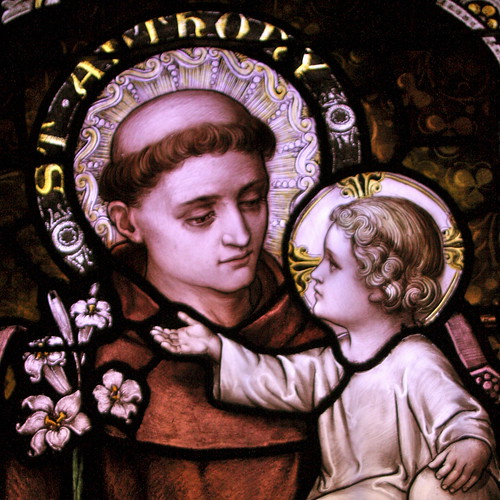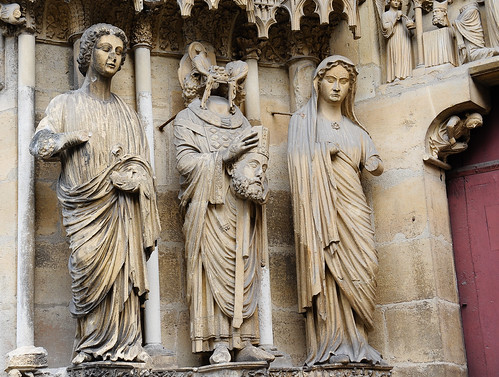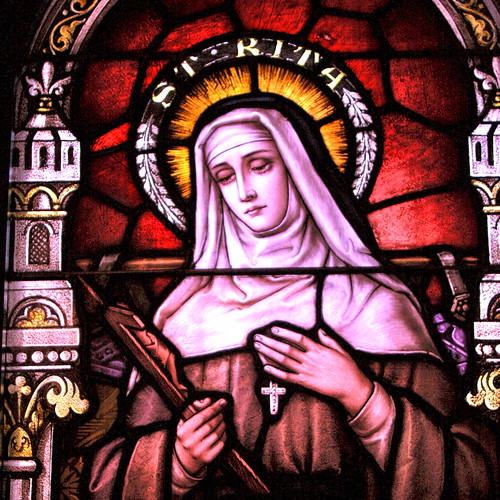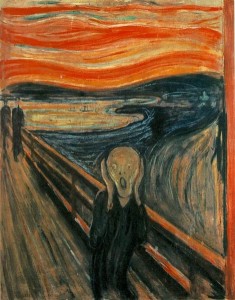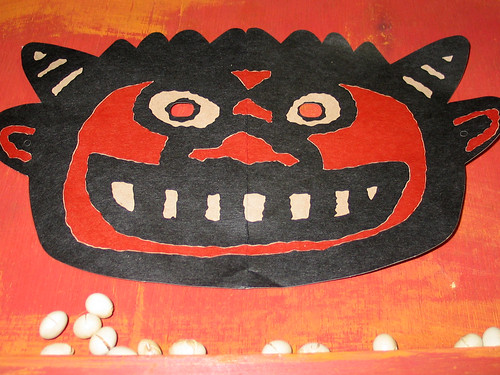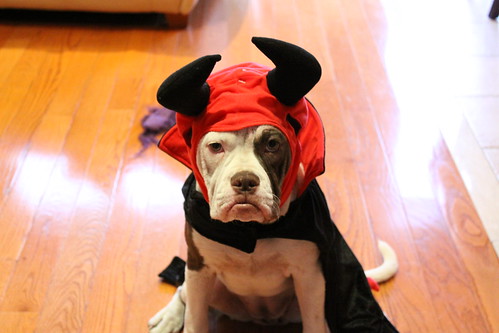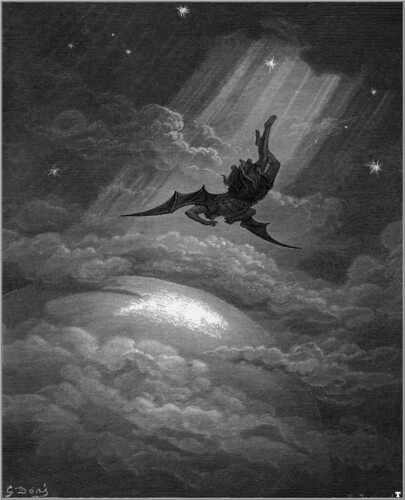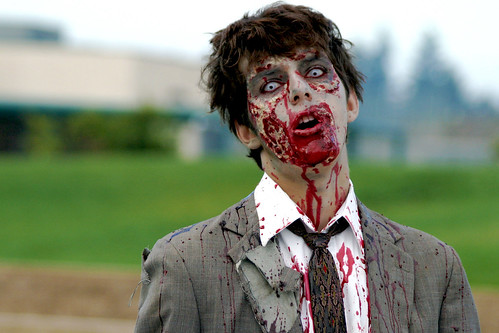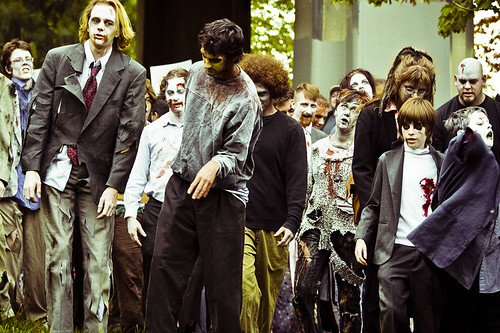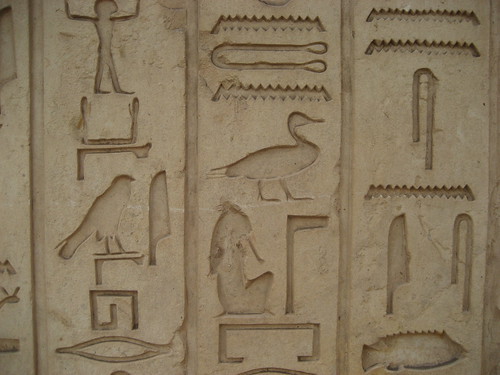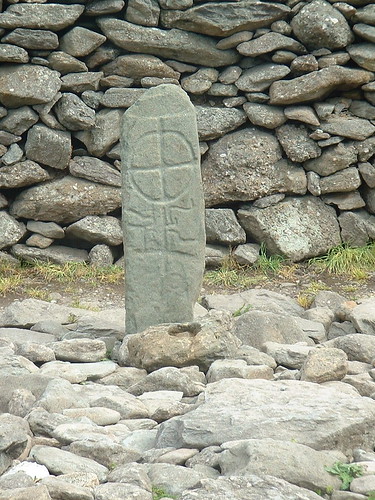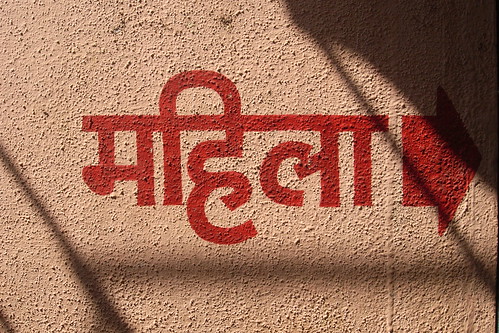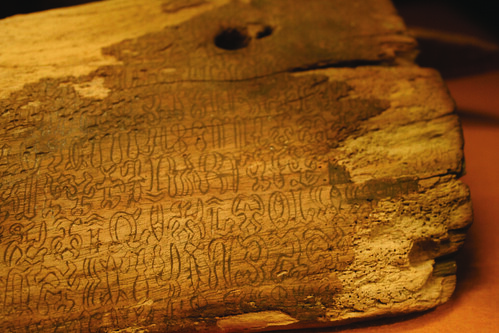Happy All Saints Day!
All Saints Day is a Christian festival “that commemorates all the saints (especially, in many churches, those who have died in the preceding year).” While the word saint comes from the Latin sanctus, “holy, consecrated,” the study of saints is hagiography, which is made up of Greek parts, hagios, “holy” and graphy, “process of writing or recording.”
[Image by Kevin Dooley under Creative Commons license]
Hagio gives us a slew of saint-words. A hagiographer or hagiologist is “a writer of sacred books; a writer of lives of the saints.” Hagiology is “that branch of literature which treats of the lives and legends of the saints; the list and legends of the saints, and, by extension, of popular heroes.” Hagiolatry is “the worship of saints,” while a hagioscope is “an opening in a wall, screen, or barrier of a church, to afford a view of the chief altar to worshipers in the chapels or side aisles,” and is also known as a squint.
There are also several types of saints. A martyr is “one who willingly suffers death rather than surrender his religious faith.” The word comes from the Greek martus, “witness.” A hieromartyr is “a martyr who was a priest or bishop” (hiero is Greek for “sacred’ and also gives us hieroglyphics), while a protomartyr is “the first martyr; the first of any series of martyrs; the first who suffers or is sacrificed in any cause; specifically, Stephen, the earliest Christian martyr” (proto is Greek for “first”). A “list or calendar of martyrs” is a menology or Menologium.
A thaumaturge is “a worker of miracles; a wonder-worker,” and is also a magician. The word comes from the Greek thauma, “wonder, wonderous thing.” A cephalophore is “a saint who is generally depicted carrying his or her own head; in art, this was usually meant to signify that the subject in question had been martyred by beheading.” The word cephalophore is made up of the Greek kephale, “head,” and phoresis, “being carried.”
Dulia is “an inferior kind of worship paid to saints and angels in the Roman Catholic Church,” while hyperdulia is “the worship offered by Roman Catholics to the Virgin Mary: so called because it is higher than that given to other saints.” The word dulia comes from the Greek doulos, “slave.” Opposed to dulia is latria, “a technical term for that supreme worship which is allowed to be offered to God only,” and comes from the Greek latreia, “worship, service paid to the gods, hired labor.”
Saints are often depicted with halos. The word halo comes from the Greek halos, “disk of the sun or moon, ring of light around the sun or moon.” A halo is also known as a nimbus, which also refers to “a cloud or system of clouds from which rain is falling,” and comes from the Latin nimbus, “cloud.” Other synonyms for halo include aureole, glory, and corona.
[Image by Kevin Dooley under Creative Commons license]
Heiligenschein is “an optical phenomenon which creates a bright spot around the shadow of the viewer’s head, when the surface on which the shadow falls has special optical characteristics (as with dewy grass).” According to World Wide Words, the word is German and literally means “holy light,” and is “caused by internal reflection within the drops of water on the blades of grass (a related process in other circumstances makes a rainbow).”
For even more halo types and phenomena, check out this list.
Did you know the word tawdry, meaning “gaudy; showy and tasteless,” actually has saintly origins? It comes from tawdry lace, an alteration of Saint Audrey’s lace, which was “sold at the annual Saint Audrey’s fair, Ely, England.” According to the Virtual Linguist:
Legend has it that Audrey, a religious woman, died of a tumour in her throat. She believed the tumour grew because she was being divinely punished for her love of fine silk and lace neck ornaments. In the 16th century the women of East Anglia would buy tawdry lace adornments and jewellery at annual fairs held in honour of their patron saint. In time cheap and tacky versions of the necklaces were produced and sold at a lower price, hence today’s meaning of the word tawdry.
Pantaloons, “tight-fitting garments for the thighs and legs, worn by men of fashion, generally buttoned around the lower part of the calf,” also has its origins in a saint. As per the Online Etymology Dictionary, the word is associated with Pantaloun, a “silly old man character” in a 16th century Italian comedy “who wore tight trousers over his skinny legs.” Pantaloun comes from San Pantaleone, “a popular saint in Venice,” and “in the comedies represents the Venetian.”
For even more saintliness, check out these lists: Patron Saints; We Have Saints for Your Complaints; and Good People.
